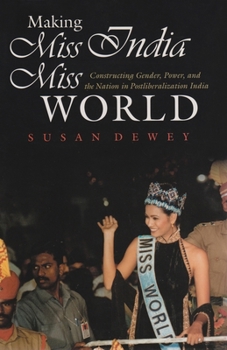Making Miss India Miss World: Constructing Gender, Power, and the Nation in Postliberalization India
(Part of the Gender and Globalization Series)
For almost half a century, the Miss India competition has been a
prominent feature of Indian popular culture, influencing, over time,
the conventional standard for female beauty. As India participates
increasingly in a global economy, that standard is gradually being
shaped by forces beyond the country's borders. Through the unexpected
lens of a participant in the 2003 beauty pageant, Susan
Dewey's Making Miss India Miss World examines what feminine beauty
has come to mean in a country transformed by recent political,
economic, and cultural developments.
Dewey offers readers an up-close view of the beauty pageant
process concentrating on the intense trainng program undergone by
contestants and involving extensive physical, emotional, and cultural
transformations. Covering everything from proper table etiquette to
preferred skin tone, the author reveals the exacting standards set by
pageant officials and reflected in Indian society. Yet she also recognizes
the empowerment these women are afforded by their status as
beauty symbols in a culture increasingly shaped by the visual influence
of national and international media.
Making Miss India Miss World constitutes an important cultural critique
and an enlightening take on how macroeconomic change
affects cultural identity at the individual level.





